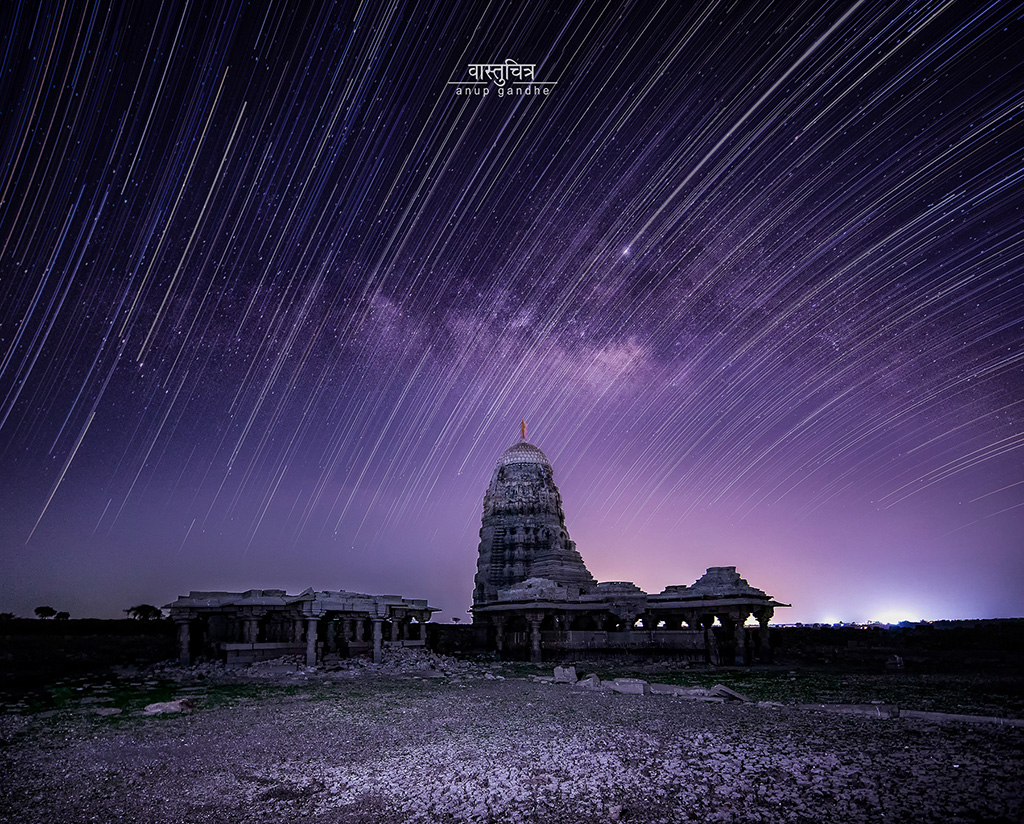I came across a photo of an Indian temple while browsing Instagram and was stunned by the beauty of it. It was certainly a thoughtful work.
On looking at other photos from Anup, it was a visual delight for me. He does perfect justice to the architecture captured in his frame. The perfection, beauty, texture, composition, colours in his work just soaks us in.
‘Love for Bharatiya Shilpkala (Indian architecture) I feel this overlaps between us and felt the eagerness in pursuing Anup to know more about him and his art.
Anup gladly accepted for the conversation and I am thankful for this. He shared some amazing insights of what really goes before, during and after he captures any architectural.
To give you a brief introduction of Anup, he is an architect and photographer based in Pune. Fascinated by Indian architecture he started photographing them which then led to the birth of vastuchitra.co.in
Anup regularly posts his work on social media channels, you can follow him on ![]() anupgandhe and
anupgandhe and ![]() vastuchitra
vastuchitra
Some of the many of his masterpieces
Let’s begin with the conversation
Niraj: Can you tell us about your journey into photography, how and when did it happen?
Anup: Being an architect, I was always mesmerised by our cultural heritage. The architectural legacy of India & its monumental scale fascinates me. I am trying to document these heritage sites with different perspectives.
Niraj: What is Vastuchitra?
Anup: ‘ Vastuchitra ‘ is trying to document the architectural legacy of India from an architects eye.
Niraj: Why did you select architectures and why not living objects (portrait, wildlife, domestic life :P)?
Anup: Though these monuments & their spaces are main subjects in my photographs, I do shoot people & animals if they add any artistic value to the structures & depict their scale or proportions.
Niraj: No doubt your photos of architectures is like making them alive. Can you tell us what is the recipe for taking such amazing photos?
Anup: I generally do a detailed study of plans, sun movement & do a recce of the site before planning the shoot. Shadow is an important factor in architectural photography as it represents depth in 3rd dimension. I get very small time window to shoot these monuments so every minute detail is taken care of in planning.
Niraj: Your photos look tack sharp and with a glassy smooth texture, can you tell us about what post-processing you carry out?
Anup: I use Adobe Photoshop CC & Lightroom CC for editing. A little bit of burning, dodging & perspective correction is done in post-processing.
Niraj: What gears do you carry with you?
Anup: A full-frame camera with good dynamic range is preferred by me as major shots taken are handheld. Canon 17mm f/4 Tilt Shift lens is my favourite lens. Tilt Shift lenses are specially made for architectural shoots & give a lot of freedom to compose shots in tight spaces. I also use GoPro a lot.
Niraj: What permutation combination of thoughts runs in your mind before you press the shutter?
Anup: I previsualize the shots before shooting them. There is no space for error while shooting symmetry.
Niraj: Your black and white photos are equally gorgeous as your colour photos, what elements do you try to bring into?
Anup: ‘Black & White Photography erases time from the equation’
– Jason Peterson
We can capture much more dramatic images with good depth in this medium.
Niraj: How do you manage to get photos without any crowd and those night shots are mind-blowing 😀
Anup: I prefer to shoot early morning or late at night if permissible. These are the times when least crowd is expected.
Niraj: When we look at your photo there are lots of elements at play, would you mind detailing a couple of them?
Anup: Every photograph has a different visual narrative & story to tell. Depicting proper scale & proportion is a must in architectural photography. Every element other than the structure should add value to the monument.
Niraj: We know you are coming up with workshops but till the time it is live, can you suggest what materials, courses you recommend to someone who wishes to learn and follow your suit?
Anup: Yes my workshops & photo tours would be live in a couple of days.
Meanwhile, Google & Youtube is where you can solve your every query.
I am constantly trying to learn & experiment new things trying to incorporate them into my genre.
Niraj: How can we get a print of your photos?
Anup: I will soon start an online ‘ Vastuchitra – art store ‘ where you can buy prints & other merchandise.
Niraj: Your photos will make an amazing photo book, and I am sure you must have thought about this?
Anup: Yes I am also planning a coffee table book focusing on Indian Architectural Heritage.
Niraj: Your answers were really insightful and I am sure it would certainly help someone who wishes to pursue and know more on this genre of photography. Thank you for sharing your thoughts!
Anup: Thank you!
Hope you all enjoyed the conversation with Anup and got to know more about his work.
Do follow him if photography and magnificence of Indian Architecture moves you.
Write down your suggestion/questions in the comment box below.
Was this post helpful





